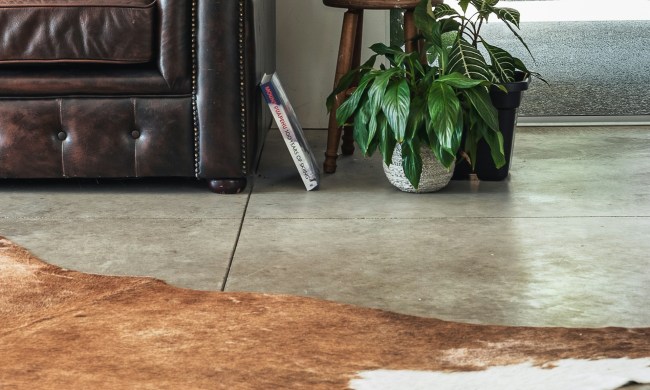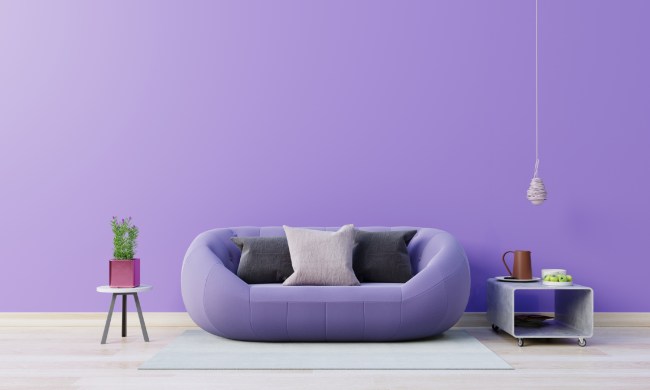When your baby starts to crawl and become mobile, it’s an exciting time. It’s so wonderful to watch them grow, change, and become more independent.
However, while you’re thrilled to see their development progressing, a mobile baby brings up concerns regarding hazardous items in your home that could injure your moving munchkin. In the living room alone, there are sharp edges, heavy and tippable objects, as well as scads of electrical cords, all posing their own forms of danger to your little one. We’re going to go over what you need to know when baby-proofing your furniture in the living room so that your baby can be free to roam and explore safely.
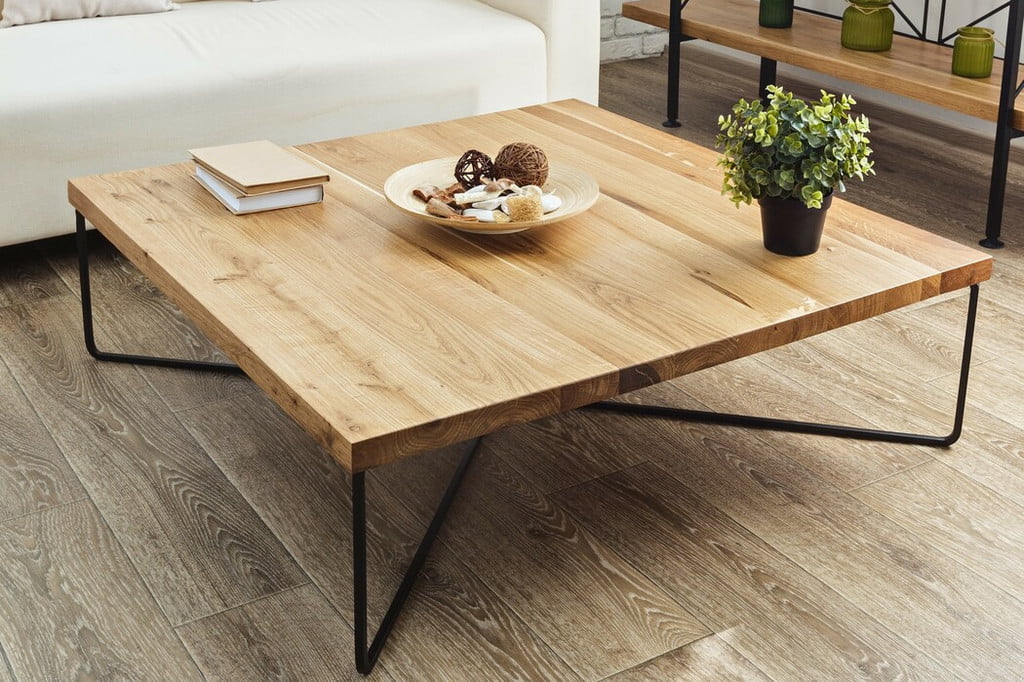
Big furniture, big danger
Furniture is the biggest hazard to little ones, and it’s the most important type of item to baby-proof.
Protect kids from corners
The corners of your coffee table and end tables are particularly hazardous to your infant, especially if they are just starting to toddle around on their shaky legs. One little trip and their head could barrel straight into that corner and result in a bump, bruise, or even stitches. Protect your little one’s noggin by investing in some corner guards for those sharp edges. Edge protectors come in several different forms but are typically made with soft, foam materials. They adhere to the surface of your furniture, so prying little hands can’t pull them off very easily.
Anchor tall furniture pieces
Once your baby starts crawling, it’s only a matter of time before they’ll be able to pull themselves up onto their feet. Growing babies tend to pull themselves up on anything available, regardless of how safe it is to do so. That’s why it’s imperative to anchor your tall furniture, like bookcases, curio cabinets, and TV stands, to the wall so that they don’t come crashing down on your baby when they pull on it. To anchor these items in place, you can use brackets, cables, or straps intended for baby-proofing your tall furniture.
Install drawer and cabinet locks
If your TV stand, coffee table, or end tables are equipped with drawers, it’s a good idea to install child-proof locks on them to prevent your baby from accessing its contents. Not only could there be small items in the drawers that are choking hazards, but if the drawer itself is heavy, your baby could potentially pull it out of the table completely, and the drawer could fall on them.
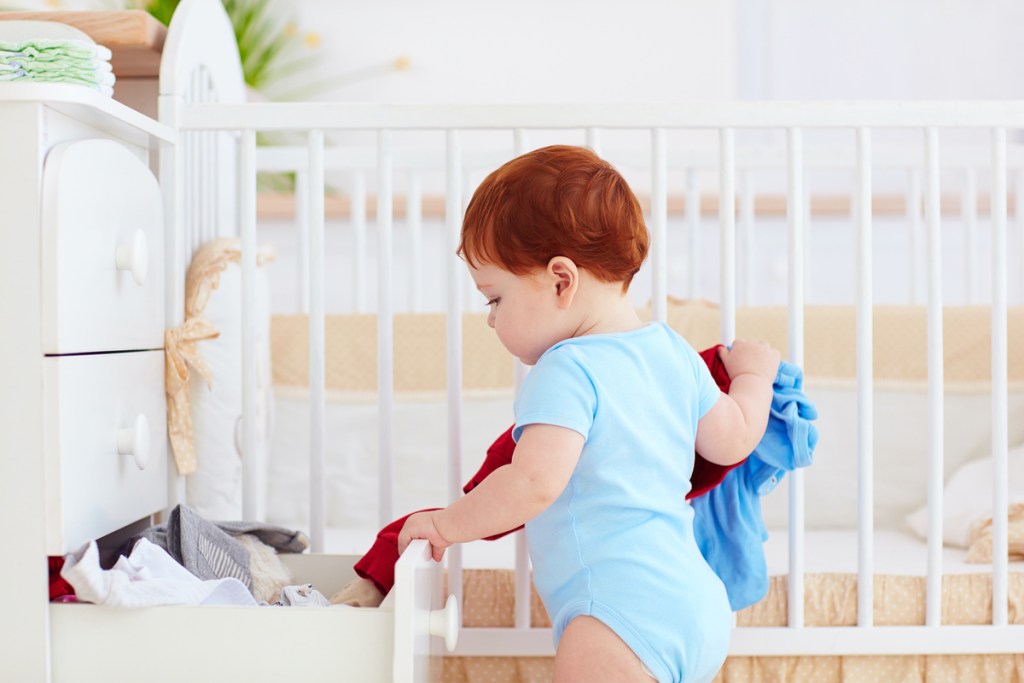
Don’t forget the little details
Little things we see every day but think nothing of can be incredibly dangerous for your kids. Don’t forget to jot these down when it comes time to prep your home for your mobile kids!
Tie up electrical cords
With your TV, internet modem, cable box, and your DVD player in the living room, a lot of cords are bunched all around in places that your baby can access. This poses a hazard since your baby could pull on the cord and possibly pull the object itself down. There’s also the risk of shock, especially since babies tend to put things in their mouths. Using velcro, cord sleeves, or even zip ties, gather hanging cords and tie them in a way that lifts them away from the reach of those little hands.
Block off hazardous items
Depending on the layout and amenities of your home, there could be certain larger items or locations that pose a higher level of danger for your little one. A hot radiator, a fireplace, or a staircase could certainly lead to a harmful and dangerous situation. To ensure the safety of your baby, you should always use fireplace gates, radiator covers, and baby gates in these hazardous areas.
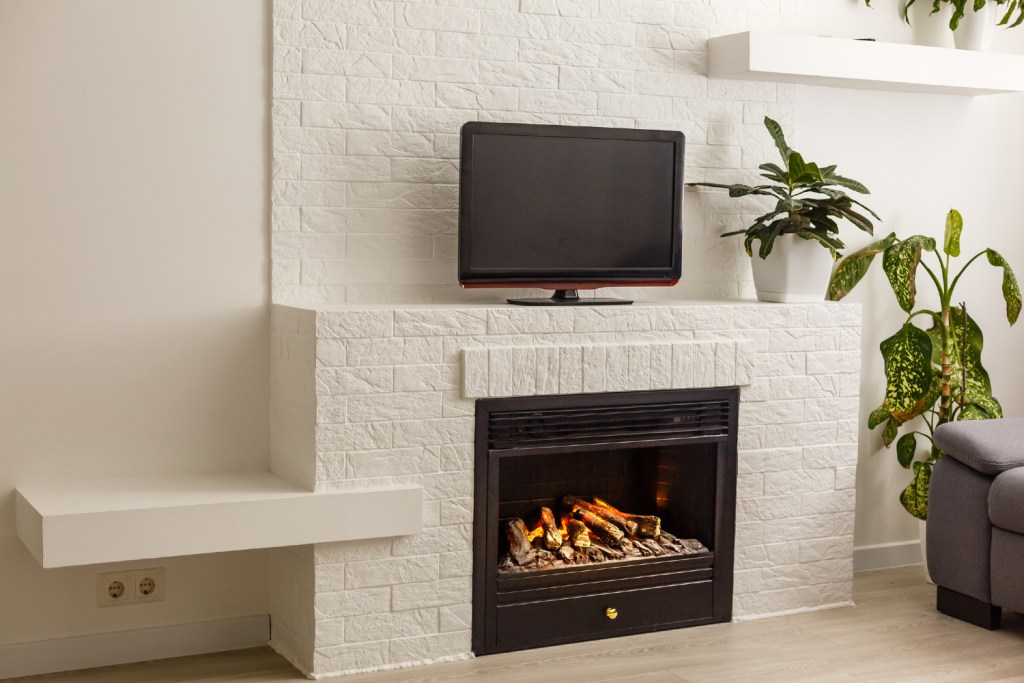
Keep small or poisonous items up high
We know our babies love to put things in their mouths. It’s just an unavoidable part of their development, so it’s best to keep items that you should not ingest in high places that are unreachable to little hands. This includes small items that could be a choking hazard and substances that could be harmful if ingested, like your remote’s batteries or even poisonous plants.
As your baby gains the freedom of mobility, they might surprise you with how quickly they can move and how often they get into troublesome spots in mere seconds. Since you can’t depend on being able to keep both eyes on them at every second, it’s safest to be sure that the rooms in your home that are most often occupied, like the living room, are properly baby-proofed for safety. Once you’ve gone through the initial headache of transitioning your home into a toddler-safe space, you’ll be glad for the peace of mind.

